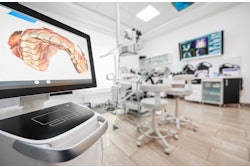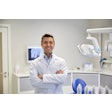As we look ahead to 2025, one theme stands clear: The patient experience will take center stage in trends that affect dental practices. Patient expectations are rising; they seek practices that offer new innovations, such as artificial intelligence (AI) and other technology, convenient communication, transparent information sharing, and personalized care journeys.
For dental and oral surgery practices everywhere, big questions about how they run their practices, how they manage their staff, and whether or not to invest in technology have to be answered to meet these rising patient expectations. While no one source has exactly the right answer for every dental or oral surgery practice, we can make some key predictions about what trends we can expect to see impact our industry in 2025.
Patient expectations are rising
At your practice, your patient is a patient, but in the rest of their life, they are also a consumer and customer. When they book an appointment at the barber or at the nail salon, they receive text message reminders with useful information, such as parking notices, what to bring, what to wear, and more. This is part of why patient expectations are rising.
People are getting more used to highly personalized customer engagement that supports them throughout their whole experience. They are looking for easy ways to receive instructions and reminders, fill out forms, and give feedback.
Digital dentistry is coming
Patient expectations are not just rising in regard to engagement. They are also rising around how practices are utilizing technology, with 87% of patients saying that it matters to them that their dentists use the latest technology, including AI, 3D printing and scanning, and robotics.
Like many other industries, dental and oral surgeons are also embracing AI. We will continue to see AI enhancing both clinical practice and the patient experience in these areas, among others: diagnosis, image analysis, treatment planning, patient management and engagement, and operational tasks (like inventory management).
Cosmetic dentistry leads innovation
Cosmetic dentistry is increasing in popularity and leading the way when it comes to innovation. In fact, a recent study indicates that this market is projected to experience an annual growth rate of 7.1%.
The top ways people are embracing innovative cosmetic dentistry are through digital smile design, gum contouring, teeth whitening with nanotechnology, ultrathin and durable veneers, and exploring more biocompatible materials. Either way, patients will be looking to work closely with their dentists to understand the new innovations and make choices that lead to the best outcomes for their personal needs.
DSO sales increase
The dental workforce is aging. In the next five to 10 years, many dentists will retire, and there are fewer younger dentists in the field. Soon, more dentists will have to decide if they want to close their practices, or if they will sell to a dental service organization (DSO), and it looks like many are choosing the latter.
This can impact the patient experience. When a practice sells to a DSO, the patient experience can change whether it brings new technology or standardized protocols. These changes must be managed thoughtfully to maintain the personal relationships and trust that independent practices have built with their patients over the years. On the flip side, when a DSO acquires a new practice, they need to consider how to make that experience uniform across all of their practices without losing the individual character that made each practice successful.
DSOs are on a fast track for growth. One report indicates that the market will be worth nearly $455 billion by 2030, for an impressive growth rate of 15.8% a year. Understanding this, we know that it's likely that in 2025 we will continue to see an increase in DSO sales.
Ongoing staffing shortages
Staffing shortages in the dental industry have been a trend for some years and are likely to remain one. Part of the reason for this is the high level of stress in the healthcare industry, stemming in part from the effects of the COVID-19 pandemic. Many healthcare providers, dental professionals, and other staff got burned out and overwhelmed and left the profession.
In 2024, 60% of dentists indicated staffing recruitment was their top challenge, and we expect this to stay true in 2025. While the staffing shortage may not be solvable overnight, mitigating the effects of the staffing shortage is possible. Practices will need to leverage digital dentistry and other technologies that can help their staff save time while still ensuring their patients' expectations are being met and providing a positive patient experience.
Next year promises to be an exciting, challenging year for dental and oral surgery practices everywhere, but keeping the patient experience top of mind will be key. Whether you're considering implementing AI at your practice or selling to a DSO, there are big questions to consider and keeping a pulse on what's to come.
Josh DeVries is the CEO and co-founder of Intiveo, a patient engagement software solution designed to empower dental practices to enhance patient experiences. Intiveo helps over 14,000 providers communicate the important requirements of their procedures to over 18 million patients annually.
The comments and observations expressed herein do not necessarily reflect the opinions of DrBicuspid.com, nor should they be construed as an endorsement or admonishment of any particular idea, vendor, or organization.



















